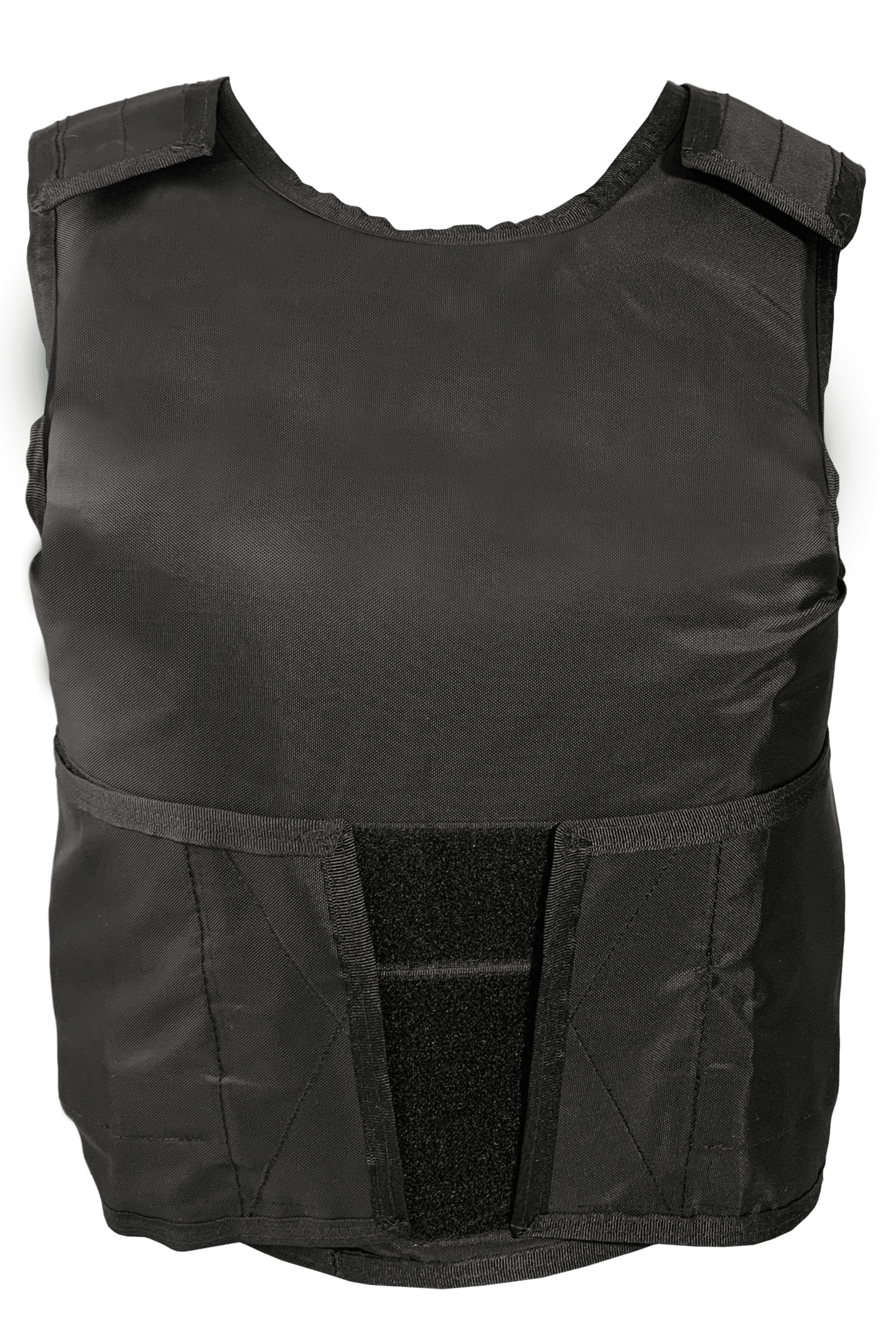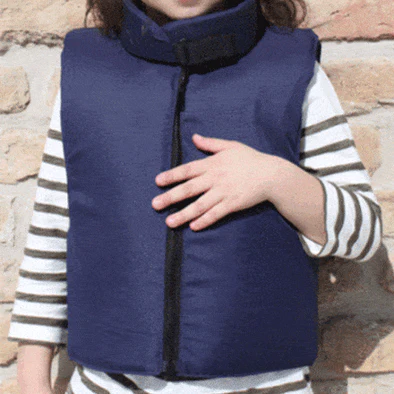Buying a Bulletproof Vest? Here's How To Find The Best One
Thinking about buying a bulletproof vest but don't know where to begin? We get it. There are lots of choices to make when it comes to a ballistic vest: concealable or overt? Vest or plate carrier? What about protection level, material, and cost?
You're investing in your safety when buying a piece of body armor. Your choice could be the difference between life and death, so you need to know the answers to these and other questions.
That's what Bulletproof Zone is here for. In this article, we'll set you up with all the information necessary to buy the best bulletproof vest for your needs - - precisely what to look at when choosing one, coupled with our curated pick of over a dozen featured ballistic vests. After that, we’ve got guidance on how to properly wear and maintain your new bullet proof vest.
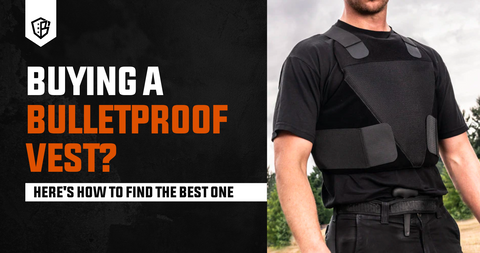
- Bulletproof Vest - The Basics
- What is a Bulletproof Vest?
- What are Bulletproof Vests Made Of?
- How does a Bulletproof Vest Work?
- Who uses a Bulletproof Vest?
- What to Consider when Buying a Bulletproof Vest
- Which are the Best Bulletproof Vest?
- Best Budget-Friendly Bulletproof Vest
- Best Premium Bulletproof Vest
- Best Concealable Bulletproof Vest
- Best Lightweight Bulletproof Vest
- Best Bulletproof Vest for Law Enforcement & Security Professionals
- Best K9 Bulletproof Vest
- Best Bulletproof Vest for Civilian Adults
- Best Bulletproof Vest for Women
- Best Bulletproof Vest for Children
- Best Tactical Bulletproof Vest
- How to Wear a Bulletproof Vest
- How to Care for a Bulletproof Vest
- What are the Alternatives to a Bulletproof Vest
Bulletproof Vests - The Basics
What is a bulletproof vest?
Most accurately called a ballistic vest or a bullet-resistant vest, a bulletproof vest is a piece of Personal Protective Equipment [PPE]. In particular, a variety of body armor.
The modern bulletproof vest was invented in the early 1970s and essentially consists of two parts:
-
An outer carrier vest made of hard-wearing fabric
-
One or more armor panels within the vest which are either permanently sewn in or removable
Protective materials inside the armor panels allow a bullet, explosive fragments, or other projectile to hit the vest but not penetrate the wearer's body. So keeping their vital organs undamaged and the wearer alive.
Perhaps surprisingly though, not so many types of bulletproof vest can stop a stab, spike, or slash from an edged or bladed weapon. And hardly any work against a stun gun or a taser.
What are bulletproof vests made of?
The armor in bulletproof vests is made with ballistic (bullet) resistant materials. For the most part, different sorts of soft armor - - most popularly, DuPont Kevlar (a para-aramid) or else Ultra-High-Molecular-Weight PolyEthylene [UHMWPE].

Nowadays commonly a composite of the two, both are highly durable synthetic fibers at least 5 times stronger than steel on an equal weight basis and heat-resistant. In bulletproof vests, the ballistic fibers are often interwoven and layered many times to create a web-like framework of many "nets."
A few models of bullet proof vest, on the other hand, hold specially adapted pockets and so can be rigged with hard body armor plates.
How do bulletproof vests work?
Generally speaking, bulletproof vests work by:
-
changing the shape of the impacting bullet
-
slowing it down
-
spreading the energy from the hit across the whole armor structure instead of it being focused at the impact area
When a bullet hits a ballistic vest, each layer of that "net" works to slow the bullet more and more until it's stopped moving. The resistant fiber layers end up deforming, but they also deform the bullet until it's shaped like a mushroom, which makes it even less penetrative.
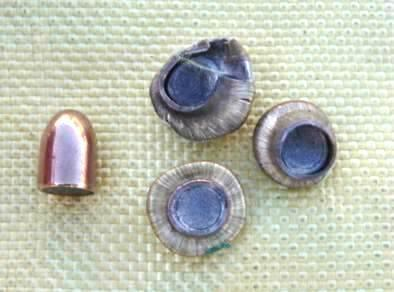
So if you're hit while wearing a bullet proof vest, you'll feel the impact across your whole body as opposed to only in the strike zone, the spot where you would have a bullet hole in your flesh if the vest wasn't there.
Hard armor works a bit differently from soft armor. It tends to deflect or shatter an incoming projectile and absorbs more of its impact energy, but the end-result is the same.
Who uses bulletproof vests?
Most people who use bulletproof vests are in high-risk occupations -- military personnel, law enforcement, security personnel, and the like. These people run the risk of exposure to gunfire on a regular basis.
But civilians can and do use bulletproof vests, too. You'll find bullet-resistant vests for children, adults, and even animals that work with law enforcement or the military!

But civilians can and do use bulletproof vests, too. You'll find bullet-resistant vests for adults, children, and even animals in service with the police and the armed forces!
WHAT TO CONSIDER WHEN BUYING A BULLETPROOF VEST?
The main considerations to keep in mind when shopping for a piece of potentially life-saving equipment are:
Degree & type of protection
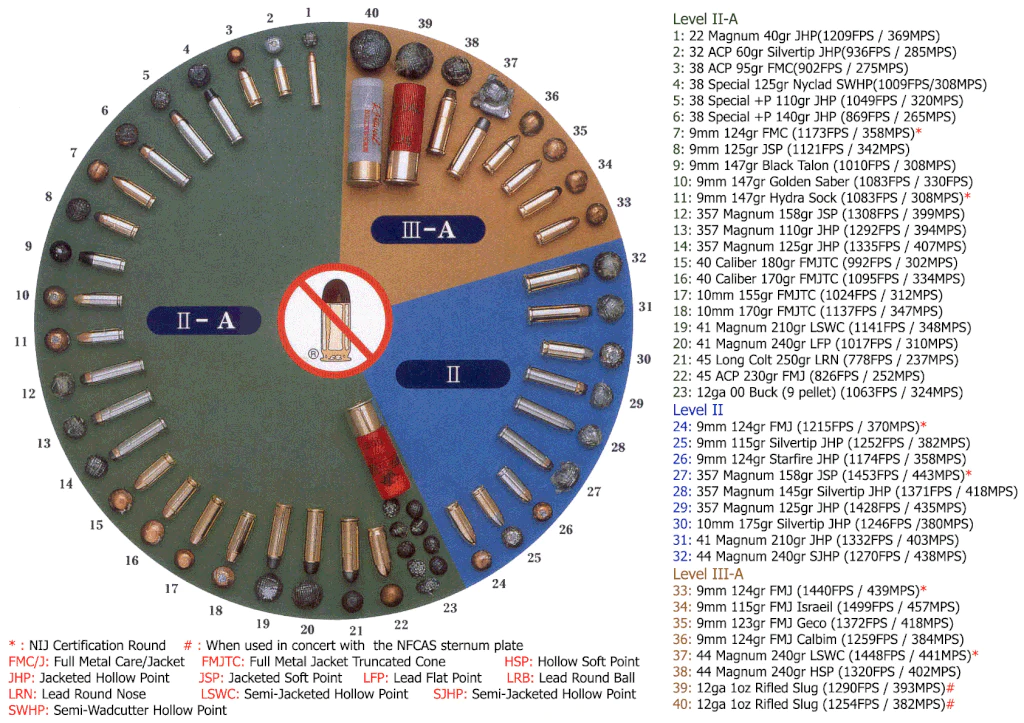
This is one factor you don't want to compromise or overcompensate on: don't compromise by getting a lower protection level than you need, and don't overcompensate by getting one too high for you to realistically wear.
If you're wearing a vest that doesn't handle the type of threat most likely to come your way, you're doing yourself no favors even if you saved some money by getting that lower protection level.
But if you just want general protection against gun violence as you go about your daily life, something like a plate carrier or a tactical vest with Level III or IV plates probably isn't the best choice for you.
Sure, it would protect against AR-15 ammunition (the most common active shooter weapon), but not only would the vest be highly visible in an environment where it could draw unwanted attention, that added protection would also be more weight than most civilians are willing or physically able to wear around town all day.
NIJ PROTECTION LEVELS
The United States National Institute of Justice [NIJ] provides the official ratings for bulletproof vests and body armor in general.
All body armor is classified under one of 5 protection levels - - in ascending order of protection: IIA, II, IIIA, III, and IV. These levels have an "A" alternate that cycle upwards to Level IV, the highest protection level.
We've already got an in-depth blog post on Body Armor Protection Levels that you really should check out. Knowing the protection level you need is crucial because everything from your vest's cost, size, weight, and fit will be determined by this.
Recommended protection levels
These are the NIJ levels we'd generally recommend based on your reasons for wearing a bulletproof vest.
Again, this is general, so it's not taking into account special circumstances or whatever firearm you may happen to be working with.
For example, if you're a civilian out in the woods with your hunting rifle, the generally recommended protection level of IIIA would be inadequate against your own weapon's ammunition. For that, you'll need at least Level III hard armor.
So first things first: always get a vest that can protect against your own gun. It's just a standard rule of thumb.
Civilians seeking general protection
We recommend Level IIIA. This covers you from almost all handgun rounds up to a .44 Magnum but is still lightweight enough to be concealable and comfortable under most circumstances. Once you get used to the feel of a properly fitting Level IIIA vest, you'll hardly know it's there.
Law enforcement, correctional officers & security personnel needing protective gear on the job
If you're law enforcement, you already know there are many different state and federal agencies. Which one you're a part of and what work you're doing there affects what level of ballistic protection you're required to wear.
The range runs from anywhere between Level II at the minimum and Level III for officers responding to tactical situations such as live active shooters.
For Corrections Officers [COs] and security personnel, because you might face both gun and sharp weapon threats, we suggest a multi-threat ballistic vest with a protection rating from Level II to Level IIIA.
TRAUMA PADS

Trauma pads are non-ballistic pads that fit behind a vest's ballistic panels or plates. Their purpose is to protect the wearer against blunt force injury resulting from Back Face Deformation [BFD] when a bullet hits armor.
In other words, just because an impacting bullet doesn't penetrate your flesh doesn't mean you still won't suffer soft tissue injury and major bruising. Even if it's from a 9mm round, that's still a high enough velocity projectile sending all its force into your vest.
Trauma plates lessen the injury, bruising, and pain by absorbing and dispersing some of the force from that impact. That's why they're such a sought-after piece of extra gear.
Comfort
Even though a bulletproof vest won't feel like a cashmere sweater, it must be comfortable for the amount of time you need to wear it. Otherwise, it can distract you, putting you in danger.
Sizing is the most vital factor as far as comfort is concerned. Look for the vest that fits you best. Get the size as close to your measurements as possible.
How do I find my bulletproof vest size?
To find your size for a ballistic vest, you'll need someone who can take measurements of your torso with a soft tape measure.
Measure:
-
shoulder to shoulder ("A" in the below image)
-
across the front chest ("B")
-
across the front waist ("C)
-
torso height ("D")
Using sizing guides for bulletproof vests
Different body armor manufacturers tend to have their own sizing suggestions.
Like the table below, some vest manufacturers' sizing guides list sizes based solely on the waist or chest measurement. Other brands' guides include some or all the other above measurements for shoulder, torso height, etc.

When you've found the bulletproof vest you want to buy, compare your measurements to their specific sizing guide. Remember: if your vest doesn't fit right, it can't do its job properly!
Also, consider the amount of time you'll be wearing the gear. Will you wear it every day, all day? If so, you may need to look into vests designed to be as light and cool as possible.
Weight
Through the years, bullet proof vests become notably lighter and much more effective. Still, be aware of how much weight you can take when wearing your vest for its intended purpose.
If you're a woman, you may want to look into getting a vest specially made for the female form. They're more common today than they were in the bygone days when women's only options for ballistic gear were vests designed for male measurements.
And if you're buying for a child, be sure it's not a vest they can only wear for 5 minutes before fatiguing! The kid may be pretty enthusiastic and confident about their ability to bear that load, but you make the final call on whether it's a realistic fit.
Always remember that the weight of the equipment you select will have an effect on your fatigue levels.
If you plan on wearing the vest for long periods of time, narrow your search to lighter gear such as soft armor vests.
Mobility
Your vest must allow for an optimum level of movement; you shouldn't find it hard to rotate your torso or arms normally.
During tactical situations, it's crucial to be able to react and move quickly. Can you enter or exit vehicles without being inhibited? Your ballistic vest must be comfortable enough to ensure this. A split-second delay in these types of situations can prove fatal.
Concealability
Depending on your specific situation, it matters a lot whether or not your ballistic protection is visible.
In some tactical situations, when your assailant sees your vest, they may target the areas of your body that are not protected. Otherwise, shooters tend to go for the torso, the biggest target.
Other times, you just may prefer that people not know you're wearing ballistic protection. Concealable bulletproof vests (as are the vast majority) are for you, in that case.
But in some situations, the higher level of protection and load carrying ability provided only by overt vests may be exactly what you need.
For a more detailed take on this, check out our article on the difference between concealable and overt body armor.
Cost

Your budget will often be the deciding factor in which vest or type of armor you end up purchasing.
Quality ballistic gear doesn't come cheap, but at Bulletproof Zone, we do our sincere best to get our prices as reasonable as possible.
We're so serious about this that we offer a price match guarantee if you bought a vest from us and found it at a cheaper price elsewhere within six months of your purchase.
Make sure to evaluate all your options within your budget range. Then consider whether or not investing in a slightly higher quality bulletproof vest could be worth it.
At the end of the day, you can’t put a price on your life and coming back home safely to your family.
Factors that influence the price of bulletproof vests:
NIJ certification
Body armor that's been tested to NIJ standards and given an official rating costs more than armor that has not. Buying an uncertified vest means there's no guarantee it's able to resist the ammunition its manufacturer says it can.
NIJ certification is basically such an industry standard now that any uncertified vest you come across is suspicious.

NIJ protection level
Generally, an NIJ IIIA vest is pricier than an NIJ IIA vest. A ballistic vest that is multi-threat, designed to resist both stabbing and bullets, is pricier than a vest that only handles firearm threats.
Quality
It takes careful design and testing to make a bullet resistant vest that’s comfortable, durable, and protective. This gets reflected in the price.
Warranty
Check to see which of the brands you’re considering offer warranties on their products. As a general trend, manufacturers generally offer 5 years warranty on the armor in a bulletproof vest.
Warranties add to the peace of mind that comes with knowing there's support to get your gear fixed if anything should happen to it.
Legalities
Is it legal to buy a bulletproof vest?
Yes, it is. At the time of writing, buying any type of body armor (and that includes Level IV hard armor plates) either in-person or through e-commerce is completely legal on the federal level for any US citizen or legal resident over 18 who isn't a convicted felon.
States have their own laws for body armor, though. Any of you in Connecticut, for instance, can't buy your ballistic protective gear online, by mail order, or over the phone; it's got to be a face-to-face transaction.
So always stay on top of the status of body armor in your own state.
Can I buy a bulletproof vest overseas and bring it home?

No. US law dictates that any kind of body armor cannot be bought overseas and then brought into the country.
Similarly, ballistic vests cannot be bought in the USA and taken abroad.
Basically, buy it and keep it on American soil.
What are the laws for shipping bulletproof vests overseas?
Generally, it's okay to ship soft armor overseas, but shipping hard armor is prohibited by the International Traffic in Arms Regulation [ITAR].
That's why our body armor collection features bullet proof vests from some top international brands like Israel Catalog and Protection Group Denmark.
What if you're traveling abroad and want your armor shipped to you? Take a look at our article on shipping body armor internationally.
Can I bring a bulletproof vest on an airplane?
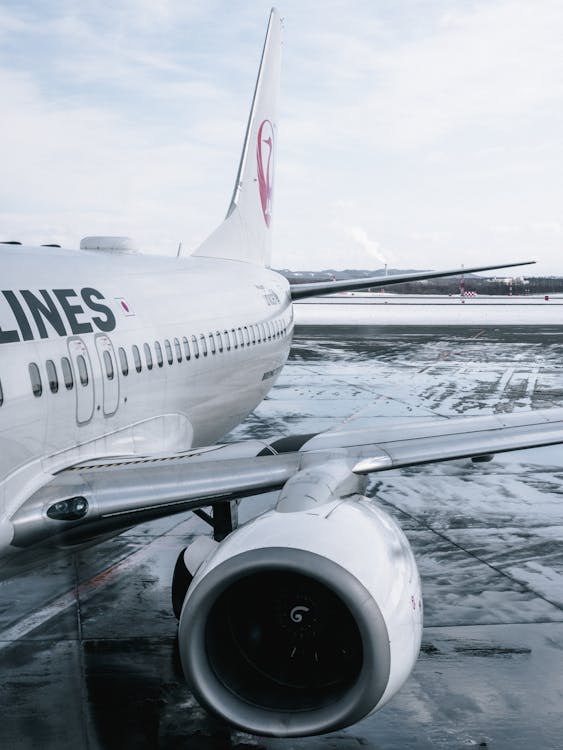
In general, yes, you can. The TSA states that body armor can be carried past security and onto an aircraft, if it’s packed away in either checked or carry-on baggage.
But here's the thing: the TSA has the right to refuse to allow a passenger's body armor past security for any reason. If that happens, you have to remove the body armor from your bag. What happens to it next is your responsibility.
To head off any inconvenience, we suggest always calling the airport ahead of time to double-check that your packed body armor will be okay that day.
And even if you get an OK over the phone, have a backup plan for what to do with your ballistic vest just in case you find it can't travel with you after you've arrived at the airport.
Can civilians buy the same bulletproof vest the military uses?

Not if that kind of vest is still in service. Different branches of the US Armed Forces use different kinds of tactical gear, but one thing is true across the board, while a model of military body armor is currently in service, it's not legal to sell to civilians.
But civilians can purchase and wear body armor that was used by the military when that model of armor goes out of service.
For example, can you currently purchase an IOTV vest like the one pictured above? Not legally. They're still being issued to US Army ground troops stationed overseas.
On the other hand, if you can find them in army surplus stores, the Interceptor vest (part of the Interceptor Body Armor [IBA] system used by the US Armed Forces until the 2010s) pictured below, is legal to purchase.
There are a few downsides to buying out of service gear, though.
If you wanted the full IBA, for instance, you'd likely have to buy all the components separately due to differences in expiration dates among the different pieces, though you can often find pieces that were issued back in the 2000s but stored for decades.
And while it would be pretty cool to own an IBA for history purposes, it's a body armor system designed for a level of conflict most civilians or private security operators will never encounter.
That means it's a relatively heavy and bulky tactical load-out that would unnecessarily restrict mobility.
WHICH ARE THE BEST BULLETPROOF VESTS?
All those things to mull over before investing in a bullet proof vest are a lot, we know. Besides, there's a mind-numbing amount of ballistic vest manufacturers and models out there.
Exactly why, to save you the headache and no matter your needs or bank balance, we've put together what we reckon are the very best body armor vests in today's market:
BEST BULLETPROOF VEST ON A BUDGET
Bulletproof Zone ProtectVest
For a no-frills, great quality and good-to-go bullet proof vest that’s easiest on the pocket, check out our very own ProtectVest.
A top-loading plate carrier style ballistic vest designed especially for ordinary folk, young and old, with zero know-how of tactical gear.
HIGHLIGHT FEATURES & SPECS
-
Removable Level IIIA 10"x12" (ProtectVest for grown-ups) or 8”x10” (ProtectVest Mini for juniors) front and back UHMWPE soft armor panels
-
Carrier vest crafted from rugged, long-lasting 600 Denier Cordura and compact so a breeze to stash
-
Like a life jacket, can be thrown on and adjusted to fit in seconds
-
Fully armored, weighs in at a seriously feathery 2.5lbs on average
RELATED MODELS

Sure, you’ll have to splash out a bit more but our ProtectVest L3 and ProtectVest L3 Air vests take ballistic protection to the next level. Also in adult and kiddie versions, both come with a pair of Level III rifle rated hard armor inserts.
And if that’s not enough, simply swap out the ProtectVest’s supplied armor for a set of correspondingly sized Level IV plates.
BEST PREMIUM BULLETPROOF VEST
Spartan Armor Systems Wraparound Bulletproof Vest
Better known for their lightweight concealment plate carriers, Spartan Armor have taken the same winning formula and applied it to a bulletproof vest.
Requiring something of a splurge but, as a ‘Listed Model’ on the NIJ Compliant Products List [CPL] and boasting 360° ballistic coverage, well worth it.
HIGHLIGHT FEATURES & SPECS
-
Usable stand-alone as Level IIIA or as a backer In Conjunction With [ICW] any hard armor set-up
-
Dual 6”x8” and 7”x9” soft armor inserts in the front, plus an added 5”x8” trauma plate to further cut down on Back Face Deformation [BFD]
-
Water-repellent carrier has a four-point strapping system for speedy adjustments as well as improved fitment and comfort
-
Moisture-wicking, anti-microbial internal lining for faster cool-down
-
Low-profile loop to reduce bulkiness and friction against the wearer’s outer garm
BEST CONCEALABLE BULLETPROOF VEST
Safeguard Armor Ghost Bulletproof Vest
Safeguard’s aptly named Ghost is one of the thinnest, lightest, and comfiest ballistic vests you'll ever don.
A really discreet piece of kit all but undetectable below a uniform or daily togs.
High-end, it’s just the job for worry-free and unrestrictive prolonged wear.
HIGHLIGHT FEATURES & SPECS
-
Removable front and rear Kevlar inserts had in either of Level II or Level IIIA, plus upgradeable to Level 1 or 2 edged blade protection and/or Level 1 or 2 spike protection
-
Coolmax-lined carrier keeps breathability up and heat down
-
4-point adjustable system in the shoulders and waist make for the snuggest fit
BEST LIGHTWEIGHT BULLETPROOF VEST
Israel Catalog Ultra Light Bulletproof Vest
Just about the lightest weight vest in its category allowing the wearer more speed, mobility and maneuverability when it counts.
Amongst the slimmest ballistic vests too so virtually invisible underneath everyday get-up.
Trusted by Israeli Defense Forces, this thing’s superbly suited to a wide range of covert ops across different environments.
HIGHLIGHT FEATURES & SPECS
-
Level IIIA armor panels, front and back, forged from a combo of ballistic materials including polyethylene. And equippable with side panel plates up to 6”x8” (sold separately) for all-round protection
-
Inner shell of the carrier vest backed by a special mesh to better wick away perspiration
-
Shoulder and waist straps highly adjustable meaning the chosen vest size doesn’t need to be spot on
-
No heavier than 4.4lbs and only 0.23” thick
BEST LEVEL II BULLETPROOF VEST
Blade Runner Lightweight Stabproof / Bulletproof Vest
Famed for their Kevlar and Dyneema anti-slash clothing, Blade Runner’s entry-level ballistic vest delivers just that - - defeating repeated strikes from bladed weapons, ice picks, broken glass bottles and similar sharps.
Oh, and providing equally first-rate protection against plenty kinds of handgun ammo by the way.
HIGHLIGHT FEATURES & SPECS
-
Level II bullet resistance plus up to 16 joules of stabbing force and 100% of slashes
-
Optionally, hike up the protection by slipping in a pair of the manufacturer’s own high-strength polyethylene Level III+ hard armor plates
-
Carrier adjustable at four points, slimline, and less than 3lbs in weight makes for a vest which can be worn daily for hours on end
BEST BULLETPROOF VESTS FOR LAW ENFORCEMENT & SECURITY PROFESSIONALS
BulletSafe Level IIIA+ Vital Protection 3 Bulletproof Vest
Superior quality, multi-threat capable, and NIJ Compliant make BulletSafe’s VP3 vest among our top selling kit.
Cracking value and ready to use out of the box, it’s ideal for correctional and police officers, courthouse bailiffs, even first responders like paramedics/Emergency Medical Technicians [EMTs] and firefighters.
HIGHLIGHT FEATURES & SPECS
-
Soft armor panels made from a fusion of polyethylene and aramid fabrics, and wrap around to extend protective coverage to the sides. Level IIIA+, unofficially, defends against stab/slash attacks from most edged and spiked weapons
-
Streamlined carrier with a breathable lining and Action Flex Technology to provide extra cushioning for even more flexible and comfy wear
UPGRADES & ACCESSORIES
-
Other than the extra small size vest, benefit from protection against rifle rounds by dropping either of a Level III or Level IV 10”x12” hard armor plate into one or both of the VP3’s front and rear plate pockets
-
Convert the standard covert vest into an overt one by adding on the Tactical Front Carrier - - starring a velcro platform for sticking on ID badges/morale tags, and rows of PALS webbing for attaching Modular Lightweight Load-carrying Equipment [MOLLE]
Safeguard Armor Stealth PRO Bulletproof Vest
The StealthPro is both a scalable and concealable bulletproof vest. Majorly comfortable for extended wear while out on patrol though no less valuable during fast-time undercover stings.
Not to mention being multi-threat capable with the opportunity to scale up or down the level of protection.
HIGHLIGHT FEATURES & SPECS
-
100% DuPont Kevlar panels - customizable to Level II or Level IIIA bullet resistance, NIJ-STD 0115.00 Level 1 or Level 2 edged blade protection, and Level 1 or Level 2 spike protection. SAPI pockets in the front and back can each accommodate a 10”x12” Level III or Level IV hard plate for defeating rifle and sub-machine gun calibers.
-
Body contoured build with quick-to-adjust waist straps and side panels for a near-perfect fit.
-
CoolMax mesh layer boosts breathability and wicks away moisture to keep the wearer much cooler.
BEST BULLETPROOF VEST FOR K9
LOF Defence Systems K9 StreetFighter Vest
Not forgetting armored protection for canine operators. More so, as it happens, since police dogs are often sent in ahead during the apprehension of suspects, when detecting narcotics, sniffing out explosive devices, tracking fugitives, or engaging in search and rescue.
Purposely designed for mobility and extended wear, the StreetFighter vest is worn by law enforcement and special forces K9s the world over including those at a fair few Police Departments throughout America.
HIGHLIGHT FEATURES & SPECS
-
Swappable LOF GX armor inserts made of Honeywell Gold Flex and rated at either of Level II or Level IIIA
-
Tough-wearing and ergonomically engineered carrier fits medium/large breeds (40lbs and up)
-
Inner layers of military specification mesh and Outlast thermo-technology helps keep the dog cool and comfortable
-
Super low weight, positively buoyant harness and ballistic panels
-
Pick of nine colors/patterns and specially tailored sizing options
BEST BULLETPROOF VESTS FOR ADULT CIVILIANS
Safeguard Armor HYBRID Bulletproof Vest
Several years in development, the Hybrid concealed vest is specifically adapted to be lighter, comfier, and cooler even under the harshest conditions.
Using innovative materials tech, its protective ability isn't just above par but totally customizable against an assortment of threats.
More than qualified then to rig out all manner of civilians from bank tellers and business execs to urban preppers and concerned residents.
HIGHLIGHT FEATURES & SPECS
-
Front and back armor panels packed with Kevlar - - to be had as either Level II or Level IIIA, and with or without Level 1 or 2 edged blade protection, and/or Level 1 or 2 spike protection
-
Fully adjustable polycotton carrier covered in CoolMax and lined with 3D spacer mesh allowing body heat to better escape
Israel Catalog Concealed Bulletproof & Stabproof Vest
Based on materials and tech used by Israel’s national army, this bad boy comes with special threat rifle protection the moment it’s unboxed.
As, say, a game hunter, celeb, political figure or foreign correspondent worried about being on the receiving end of a high-powered round, what better vest to have on your person.
HIGHLIGHT FEATURES & SPECS
-
Made from high-density polyethylene, front and back Level III+ plates are standalone so no need to use Level IIIA soft armor backers. To safeguard against the elements, both plates are housed in thermo-weldable nylon
-
Remarkably comfy without impacting range of motion, and at just 8.4lbs all in can be left on for lengthy periods
BEST BULLETPROOF VEST FOR WOMEN
BulletBlocker Ballistic Vest for Women
Finally, a bullet proof vest (including its armor) appropriately weighted and shaped for the ladies making it infinitely more wearable than a unisex vest.
Yet still decently constructed and providing max concealment.
No wonder then the vest is so sought after by females working various types of security detail.
HIGHLIGHT FEATURES & SPECS
-
Removable all-Kevlar Level IIIA armor panels with overlapping side wings to give all-over torso and flank protection.
-
At a mere 3lbs fully loaded and inside netting for extra breathability, no sweat (literally!) to have on all-day, everyday.
-
Separate attachment points in the shoulders and sides adjust independently for an optimum fit.
BEST BULLETPROOF VEST FOR CHILDREN
Israel Catalog Bulletproof Vest for Kids
Created in response to the Sandy Hook school shooting, this child friendly body armor is easily mistaken for a regular puffer vest.
Lightweight, comfy, and easy to put on without affecting kids’ movements or leaving them vulnerable.
HIGHLIGHT FEATURES & SPECS
-
Level IIIA Kevlar armor inserts protect the child’s torso and sides from the waist right the way up to the neck. With a bulletproof weave underneath the front zipper.
-
Waterproof as well as UV- and tear-resistant Cordura outer shell.
BEST TACTICAL BULLETPROOF VEST
Legacy Safety & Security Tactical Vest
Crazy popular and economically priced, this overt vest flies in the face of convention, combining the customary load-bearing capacity of a tac vest with the bulletproofing of a ballistic vest.
HIGHLIGHT FEATURES & SPECS
-
Front shooter’s cut soft armor panel out of the box with optional armor inserts for the rear (10”x12”) and/or sides (6”x6”). All of which are formed from aramid fibers and dual-threat rated: NIJ Level IIIA as well as CAST [Centre for Applied Science and Technology] E1 spike/stab protection.
-
Floatation-assisted densely-padded overt carrier with completely adjustable and quick-release shoulder straps.
-
Plenty PALS loops on the front, back, and waist band for mounting MOLLE-compatible gear such as an Individual First Aid Kit [IFAK]
-
Includes a snap fastener and pull tab big front pocket for popping in tactical stuff.
-
Rear grab/drag handle for carrying the vest or otherwise in case a buddy needs to pull the downed wearer to safety.
HOW DO YOU WEAR A BULLETPROOF VEST?
It is seldom the case you can simply throw on a bulletproof vest and away you go.
Once you've got that shiny new bullet proof vest, first you'll need to be mindful of what you wear beneath it in the interests of comfort and personal hygiene if nothing else.
Then to make absolutely sure the vest goes on correctly otherwise, you'll be leaving yourself wide open to taking a bullet as well as handicapping your mobility and maneuverability.
What should I wear under a bulletproof vest?
Wear a tight fit, moisture-wicking t-shirt under your bulletproof vest. Sweating is unavoidable in most cases, and moisture-wicking material will keep you from getting soaked.
For that reason, avoid wearing a cotton t-shirt under your bulletproof vest, as it will just absorb and hold all your perspiration and give you B.O. that could knock out a horse!
Something like the 221B Tactical Maxx-Dri Silver Elite T-Shirt is just right for the job. It's anti-microbial, keeps you odor-free, and provides UV protection.
How should bulletproof vests fit?
Comfort
The vest you choose must fit your body snugly without squeezing you too tightly.
A loose-fitting vest may feel more comfortable, but the level of protection it provides is much lower than a vest that fits properly.
Full coverage
Your sides, front, and back should be covered by the vest for the best possible ballistic protection. Some bulletproof vests provide only front torso coverage, but this isn't ideal; a bullet could come from any direction.
To get the best protection along your sides, make sure the front panel is wide enough to overlap the back panel by 2 inches.
Front
When adjusting the height of your bulletproof vest on your torso, leave space at the top and bottom edge of the front ballistic panel so that it doesn't push into your throat when you sit down.
When standing, the panel top shouldn't reach beyond the second button of a uniform shirt, and there should be 2 to 2.5 inches from the panel bottom to the top edge of the gun belt if you're wearing one.
Back
With the back panel, you don't want the vest to shift upward when standing up from a seated position, so leave ¼ to ¾ an inch between the panel's bottom edge and the top edge of your gun belt.
Sides
The sides of the vest should be high enough to protect the armpit region but not so high that you experience chafing or irritation when moving your arms.
HOW DO YOU CARE FOR A BULLETPROOF VEST?
Bulletproof vests must be cleaned regularly with the right kind of cleaning agents and stored properly afterward. Both these measures will help the vest maintain its protective qualities.
The golden rule here is to ALWAYS follow the manufacturer's instruction label. Each NIJ-compliant vest has this label, so find it, read it, and follow it to maintain your gear's ballistic resistant properties longer.
If you do something to your vest that the instruction label warns against, you're not only voiding your warranty but risking your safety by diminishing the ballistic resistance of your vest's panels or plates.
As a general guide, here are some Do's and Don'ts for cleaning and storing bullet resistant vests:
Carrier vest
CLEANING
-
DO remove all inserts, pouches, removable fasteners, etc.
-
DO soak carrier in warm water with a mild dish or laundry detergent.
-
DO rub the vest fabric together to loosen dirt particles while it's soaking.
-
DO rinse all soap residue from the carrier when done.
-
DO lay flat indoors to air dry, avoiding direct sunlight.
-
DO NOT use bleach, fabric softener, or color brightening products.
STORING
-
The safest option, in general, is to lay it flat.
Soft armor
CLEANING
-
DO wipe inserts with a damp cloth and mild laundry detergent.
-
DO hand wash panels in cold water.
-
Do NOT use bleach or solvents.
-
Do NOT machine wash, machine dry, or dry clean.
-
Do NOT submerge in water.
-
Do NOT expose to direct sunlight.
STORING
-
DO store flat in a dry place.
-
DO avoid excessive heat or cold.
-
Do NOT fold or roll-up.
What kind of hanger do I need for my bulletproof vest?

Depending on how heavy your tactical load-out is, you may need a special hanger designed to hold heavy loads, like the The Original Tough Hook Hanger, which supports up to 150lbs.
If you're storing a vest with hard armor plates, then a conventional hanger likely isn't strong enough to hold that weight.
Also keep in mind that hanging a vest with plates for extended periods will cause the armor inserts in the vest to sag which can cause the plates to move around when worn. This makes it harder for the vest to do its most important job - protecting you.
WHAT ARE THE ALTERNATIVES TO A BULLET PROOF VEST?
Plate carrier
Go for a bulletproof vest if your most likely threats are handguns and you need the vest to basically be like a second skin, wearable for extended work shifts, concealable beneath clothes, and light enough not to hamper your mobility in case you need to run, jump, roll, etc.
Choose a plate carrier, like the Shellback Tactical Banshee Active Shooter Kit with Level IV plates, if there's more chance of facing rifle or armor-piercing rounds and don't need to wear the vest for extended work shift periods.
Those frequently exposed to such threats, like special mission units, tend to go with plate carriers loaded with hard armor inserts that have an NIJ Level III or Level IV protection level.
Plate carriers are also the ticket if you need to attach extra gear using MOLLE or if you need the flexibility to customize your protection for different tactical situations with higher or lower level plates.
Bulletproof clothing
While they share the same soft armor make-up, the layers of which in bulletproof clothing are generally thinner than those in a ballistic vest. Making them comfier and giving better freedom of movement for use day in, day in. The flip side being that, compared to bulletproof vests, casual clothing with bullet resistance built in doesn’t provide quite as much protection.
Bullet proof clothing, everything from innerwear like tees to outerwear like the Wonder Hoodie, is also pricier. And, unlike certain ballistic vests which can be upgraded to Level III or Level IV, can’t defeat rifle rounds.
Then again, there’s more options for women and children with bulletproof clothing. What’s more, it’s meant to be indistinguishable from regular clothes so much easier for the wearer to blend into the crowd.
What else sets the two apart is that bulletproof clothing is really only worn when there’s an outside chance of the wearer being caught up in gunfire. Knowingly heading into a situation where the risk of being fired upon is far more probable, you’d sport a bulletproof vest instead.
HOW DO I FIND THE RIGHT BULLETPROOF VEST FOR ME?
Whether you're a private citizen worried about the rise in mass shootings or you're working directly in the line of duty, it's important to get a bulletproof vest that ticks all of YOUR boxes. It needs to fit your body and protect against the weapons you're most likely to come up against without being so heavy that it keeps you from moving the way you need to.
It also needs to fit your budget. Bulletproof Zone aims to keep prices as reasonable as possible, but we also have a financing plan available for anyone who needs assistance in getting their body armor. Because the truth is, bullets don't wait until your financial situation is optimal.

To get the perfect vest for yourself, assess your specific threat situation and look for armor that can defeat it. Don't go for a vest with a higher or lower NIJ rating than you need because you'll either end up bogged down with unnecessary bulk OR unprotected from the one bullet that could take your life.
For the right fit, have a friend or assistant measure your torso with a soft tape measure, and compare your numbers to the sizing guide of the brand you're looking at. If you gain or lose a significant amount of weight, reassess your fit.
Take care of your vest by maintaining it properly per the instruction label, and most important of all...
...wear your vest!
Do you have a bulletproof vest? Tell us about it in the comments below! We like hearing how you're staying safe. For those of you considering anything from our bulletproof vest collection but aren't sure, ask one of the Bulletproof Zone support team members, and we'll help you figure out what's best for you.
















